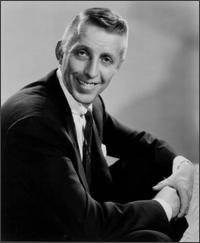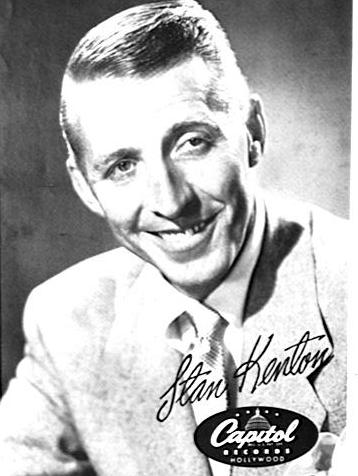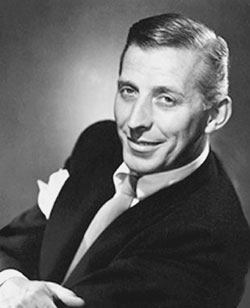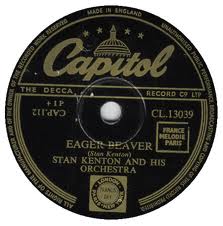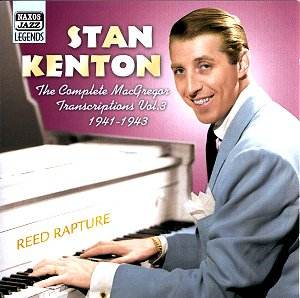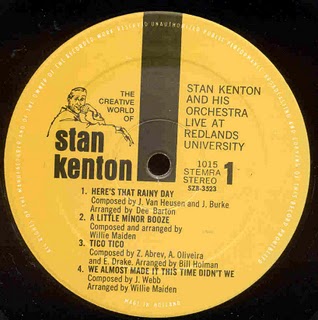|
The Portsmouth Music Scene |
|---|
Stan Kenton at the Savoy Ballroom, 14th March 1956
On this date Stan Kenton and his Orchestra were welcomed to Southsea. Here is the report from the following night's Evening News. I wonder who C.H.C. was?
A Great Day For Jazz FansFOR two hours last night, Stan Kenton held his audience spellbound and proved all doubt, the complete superiority of American jazz music over their British counterparts.The brilliant -arrangements, the tremendous power of the 20-piece Orchestra and the technical skill of the musicians will not be quickly forgotten by those Iucky enough to at either of the two concerts at the Savoy Ballroom, Southsea. Arrangements far than any ever heard in Britain left plenty of room fopr improvisation by the soloists of the orchestra. Lennie Neihaus.(alto sax), Bill Perkins (tenor sax), Bob Fitzpatrick, (trombone) were all featured in special numbers. But for me the most thrilling experience of the evening was the superb drumming of Mel Lewis (writes an Evening News reporter). He excelled particularly in "Out of Nowhere" and the Latin American numbers. His drum solo in "23 degrees North 92 degrees West" was one of the most memorable items in the concert. What a pity that bassist Curtis Counce was practically inaudible. He was without doubt one of the best musicians in the orchestra, and judging by the cheering at the end of the concert, the most popular. One of the four featured soloists, Lennie Niehaus, was perhaps the most impressive. He was magnificent in both "Stellar by Starlight ' and " Cherokee." In Limelight Trombonist Bob Fitzpatrick played beautifully in "Collaboration" and "Solitaire," but it was Carl Fontana who stole the trombone limelight with his brilliant performance of "Polka, Dots and Moonbeams." Tenorist Bill Perkins was given a beautiful backing by the orchestra for his solo in "Out of Nowhere." His warm liquid tenor was also featured in "Yesterdays" How pleasing it was to listen to a trumpet section without holding back breath in case they split their notes every time they ventured into the higher register. Vinnie Tanno and Sam Noto, the two main soloists, were particularly good. The use of the tuba and two french horns was another interesting feature of the orchestra. All these added to the warmth of the ensemble and the french horns were featured in "Concerto to End All Concertos." The programme consisted of a number of tunes that will always be associated with Stan Kenton together with his newest music. Cuban Rhythm. The latter included "Royal Blue," a tune specially written for the tour and "El Congo Valiente," a Cuban number which is a prelude a to the type of music the Kenton orchestra will soon be recording. It looks as though he is again going to lead the way to new forms of music and if "EL Congo Valiente" is an example, it should prove successful.
Everything Big, NoisyBECAUSE I am a music-lover, the News Editor thought I might like to go along to hear Stan Kenton, the King of Progressive Jazz.Now I know what is meant by the expression: A shattering experience. The audience were mostly teenagers or in their early twenties. There was none of that wide variety of age groups that you see for instance, at ballet. These young people were quiet and attentive and serious as a Municipal Concert audience. The orchestra, with the exception of the smiling Stan Kenton was, if anything more solemn looking than the average symphony orchestra. The term "progressive," is not to be used in the sense of "improving." The music, (is that quite the name, when variety of tone, colour, and mostly melody are missing ?) consists of pieces constructed in dissonant chord progressions, elaborately orchestrated. DEAFENING The general effect is deafening. I imagine It could be heard free from the Isle of Wight. To use a literary comparison, the music of progressive Jazz is as different from, say Mozart, as Walter Pater is from James Joyce. Personally, I prefer Mozart and Pater. Kenton played the piano, and played it well, but only for short periods could you hear it. Most of the time he might as well not have been at the piano. The same thing can be said of the coloured bass player, Curtis Counce. Trombones, trumpet, saxophones had it all their own way. Stan Kenton says his music expresses the modern mood of nervous frustration. How right he is. What a reflection on this wonderful modern age! It also seems to me to express, at its most strident, the American Way of Life. Everything is big and noisy. There is no room for the spirit, the still small voice. And it is every man for himself. It is music for the virtuoso and who cares for the composer? The soloists get the spotlight, they stand up so that there's no danger of not seeing them, and they improvise. The individual musician is the man who counts. It struck me as all technique and no soul. Some drummers, for instance, might give their souls to have the opportunity to be as technically clever as Mel Lewis. I have never heard anything like his drumming before. It was quite overpoweringly brilliant in his long virtuoso stretch in "23 Degrees North 82 Degrees West," but I am not anxious to hear anything like it again. Stan Kenton's wife is quoted as saying, "Let's face it-we're not living at Mozart's pace." We haven't the gracefulness of Mozart's pace, either. Let's face it when I play a record it will not be Stan Kenton. It will be "Sine Kleine Nachtmusik." C.H.C. Personnel: Stan Kenton - leader, piano Sam Noto - trumpet Vinnie Tanno - trumpet Lee Katzman - trumpet Phil Gilbert - trumpet Bob Fitzpatrick - trombone Kent Larsen - trombone Carl Fontana - trombone Don Kelly - bass trombone Irving Rosenthal - french horn Fred Fox - french horn Jay McAllister - tuba Lennie Niehaus - alto Bill Perkins - tenor Don Rendell - tenor Harry Klein - baritone Ralph Blaze - guitar Curtis Counce - bass Mel Lewis - drums
|
Return to the previous page
